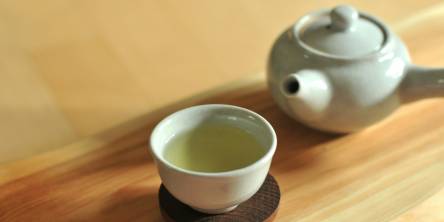The Science Behind Ice Bath Tub Therapy

Do you ever ask yourself why athletes and fitness enthusiasts rely on ice baths to help their sore muscles relax more?
The way you feel when you are submerged in ice-cold water might seem unbearable at first, but there is science associated with it. Ice bath therapy, or cold water immersion, is gaining popularity for its benefits in reducing muscle soreness, speeding recovery, and boosting performance.
However, the question remains – what happens to the body during this frosty ordeal? In what way does cold affect muscles, inflammation, and the subsequent healing process?
The answers reside in the amazing physiological changes that occur due to cold, and knowing them can enable new approaches to your fitness training.
Curious to know more?
Read on to learn more about ice bath therapy and why it will make you feel like a champion.
1. Vasoconstriction and Vasodilation
When the body is exposed to cold water, blood vessels are constricted due to the vasoconstriction process. This limits blood flow to your muscles and your body tissues to minimize swelling and inflammation whenever you are through with your activities while preserving heat for your core.
When you get out of the ice bath, your body starts to warm up, vasodilation sets in, and your blood vessels dilate. This dilation helps to get rid of metabolic wastes such as lactic acid, hence enabling fresh blood supply in the muscles and healing them.
To have the best experience, consider investing in a quality ice bath tub, which has the capacity to efficiently accommodate 1-2 adults.
2. Reduction of Inflammation
After a vigorous workout, muscles are damaged, specifically at the microscopic level, causing inflammation and soreness for a couple of days, commonly called DOMS. This soreness can become a problem in your recovery process because it slows your ability to return to training or normal activities.
Taking an ice bath can be highly effective in aiding recovery and reducing this discomfort. Cold temperature narrows the blood vessels and reduces the metabolic rate, preventing swelling and fluid build-up around the affected area or tissue.
After the ice bath, as the body warms up, the blood vessels expand to facilitate the elimination of wastes from body muscles. This process helps decrease inflammation and relieve pain; thus, you can recover faster than before and engage in activities that demand physical strength.
3. Pain Relief and Numbing Effect
When you take a bath in ice, the freezing temperature in the water affects your body to minimize pain sensations for a moment. This is similar to when you cover a sprained area with an ice pack; the area becomes numb, and pain is reduced.
Cold water makes nerve transmission slow, relieving muscle soreness and tension. This numbing effect is important after an intense workout since it tones down the pain you experience in your muscles.
Since cold reduces nerve impulses, it provides a brief respite from the pain and lets the muscles rest. While the relief is short-lived, it can mean so much to help you get back to running or other physical activities with less discomfort.
Cold exposure can be considered a relatively rapid and efficient method of relieving suffering associated with strenuous exercise.
4. Enhanced Muscle Recovery
The use of an ice bath can further improve your muscle recovery because it decreases the delayed onset of muscle soreness and overall muscle damage. Research indicates that it is good to shower with cold water after exercising hard since your tissues are likely to be repaired and regenerated better in this state.
This allows your muscles to heal faster since cold temperature decreases inflammation and slows down metabolic rates that help cause muscle damage. This means that with increased recovery, you can train longer and more often without experiencing high levels of fatigue.
Ice baths allow you to push yourself further without the concern of muscle stiffness or tightness. In the long term, this results in enhanced training performance because you can achieve higher training volumes and density.
5. Boosting Mental Toughness
Cold water immersion is good for the body, but it can be quite a mental hurdle; you can train yourself to endure cognitive pressure by practicing this hardship repeatedly. Shivering and keeping the muscles relaxed as the process happens also require lots of stamina and strength.
When you start to feel the freezing temperature, you wire your brain for endurance and the ability to handle pain. This mental stamina is applied in other aspects of life; it encompasses both the physical and the psychological aspects.
In the long run, this can benefit you by improving your mental resilience, which keeps you calm during stressful states. Cold water immersion, therefore, helps your body recover faster when involved in any physical activity and helps build up your character to endure anything that life throws at you.
Conclusion
Ice bath therapy is a fantastic practice and can significantly enhance your recovery and performance. With less inflammation, reduced pain, and quick muscle recovery, cold water immersion allows you to get back to training in no time.
Besides the physical benefits, you will develop mental strength, which will help you in case of any hardships that come your way. Therefore, the next time you dip into that freezing water, you will know that the pain will only last a short time, while the positive effects on the body and the mind will have long-term impacts.
Similar Articles
Halitosis, sometimes known as foul breath, affects millions of individuals worldwide and can cause humiliation, influencing everyday interactions and confidence.
In the modern world, maintaining good health often feels like a constant challenge. Between busy lifestyles, sedentary habits, and lack of motivation, many people find it difficult to stay consistent with exercise, diet, or wellness practices.
Learn how UV toothbrush sanitizers use UV-C light to kill 99.9% of bacteria, viruses, and fungi—backed by science for better oral health.
In the past, the experience of soaking in a hot tub or relaxing in a sauna was something reserved for spas, health clubs, or luxury retreats
Learn practical strategies for nurses to advance careers while maintaining patient care, managing time, and supporting well-being in today’s fast-paced healthcare.
Learn 6 key benefits of a juice cleanse, from boosting energy and hydration to clearer skin, easier digestion, and healthier eating habits.
Discover 5 simple ways to enjoy green tea daily for better taste, more nutrients, and lasting wellness benefits for your body and mind.
Discover how house slippers support foot health indoors—combining warmth, protection, and support—with insights from podiatrists and real‑world studies.
How whole-body donation creates a lasting impact, advancing medical education, research, and future healthcare breakthroughs.









